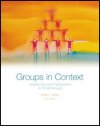Activity 1: Labor v. Management Introduction: Clashes between labor and management have a long and sometimes violent history
both in the United States and around the globe. Economic downturns often see
increased union activity; economic upturns often find unions playing a less-prominent
role in the workplace. Nonetheless, management and labor relationships typically
fit the definition of conflict: "a struggle involving opposing ideas, values,
and/or limited resources." In this activity, you'll examine the strategies that
labor and management use in handling their conflicts. Instructions: Go to Yahoo's Labor and Union News webpage.
Once there, either choose three stories in which you're interested from the
main page (click on "more" to see additional stories), or use the site's search
engine to identify stories that you'd like to learn more about. After you've
identified three stories, answer the questions below for each story. 1. What seems to be the heart of the conflict? 2. Is the conflict substantive or affective? Explain your assessment. 3. In what ways do you think this conflict is functional? How does it help
out each group? 4. In what ways do you think this conflict is dysfunctional? How does it damage
each group? 5. What strategies do the participants use to manage the conflict? Give examples. 6. How effective are those strategies? After analyzing all the stories, answer the following questions. 1. What similarities can you identify across the stories you examined in terms
of the conflict's cause, characteristics, and conflict management strategies
used? 2. What differences can you identify? 3. Imagine that you're a consultant brought in to improve how labor and management
handle conflict. What would you advise? 4. What have you learned from this activity that you can apply in your own
group experiences? Activity 2: Conflict In the Public Eye Introduction: When the World Trade Organization met in Seattle, WA, in the latter part of
1999, demonstrators took to the streets, catching the city by surprise. In this
activity, you'll examine this confrontation between the demonstrators and the
Seattle police. Instructions: Go to the PBS special report on the WTO.
Review the coverage during the WTO conference as well as the later analysis
of the events. Then, answer the questions below. 1. How did the demonstrators' and police officers' goals collide? What did
the demonstrators want? What did the police want? 2. What strategies did each side use in the conflict? Give examples. 3. How did power and ascribed status play a role in the conflict? 4. What impact did this conflict have on groups outside of the demonstrators
and the police? 5. If the City of Seattle asked you to outline ways to manage conflicts such
as this one in the future, what would you suggest? 6. What have you learned from this activity that you can apply to your own
experiences in group interactions? | 


 2002 McGraw-Hill Higher Education
2002 McGraw-Hill Higher Education